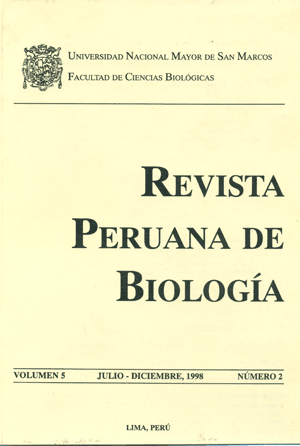Contribution to study of gastric habronemiosis
DOI:
https://doi.org/10.15381/rpb.v5i2.8327Keywords:
Habronema muscae, Xenodiagnostic, Musca domestica.Abstract
The seasonal incidence of gastric habronemiosis was estimated in three center of breeding equine by the identification of third stage larvae. Fifty animals were studied and the results showed 92% of incidence of habronemiosis. Microscopically the general characteristic of the larvae and their magnitudes let the identificaction like to Habronema muscae (Carter,1 861). In all cases, we found to Musca domestica as responsibility to spread this parasitism in the equines. We did not found significative relations between the age and the grade of parasitism, because the infection in young and adults animals were similar, and between the wounds on the skin with the gastric habronemiosis.Downloads
Downloads
Published
Issue
Section
License
Copyright (c) 1998 Julia Castro, José Alva

This work is licensed under a Creative Commons Attribution-NonCommercial-ShareAlike 4.0 International License.
AUTHORS RETAIN THEIR RIGHTS:
a. Authors retain their trade mark rights and patent, and also on any process or procedure described in the article.
b. Authors retain their right to share, copy, distribute, perform and publicly communicate their article (eg, to place their article in an institutional repository or publish it in a book), with an acknowledgment of its initial publication in the Revista Peruana de Biologia.
c. Authors retain theirs right to make a subsequent publication of their work, to use the article or any part thereof (eg a compilation of his papers, lecture notes, thesis, or a book), always indicating its initial publication in the Revista Peruana de Biologia (the originator of the work, journal, volume, number and date).


















